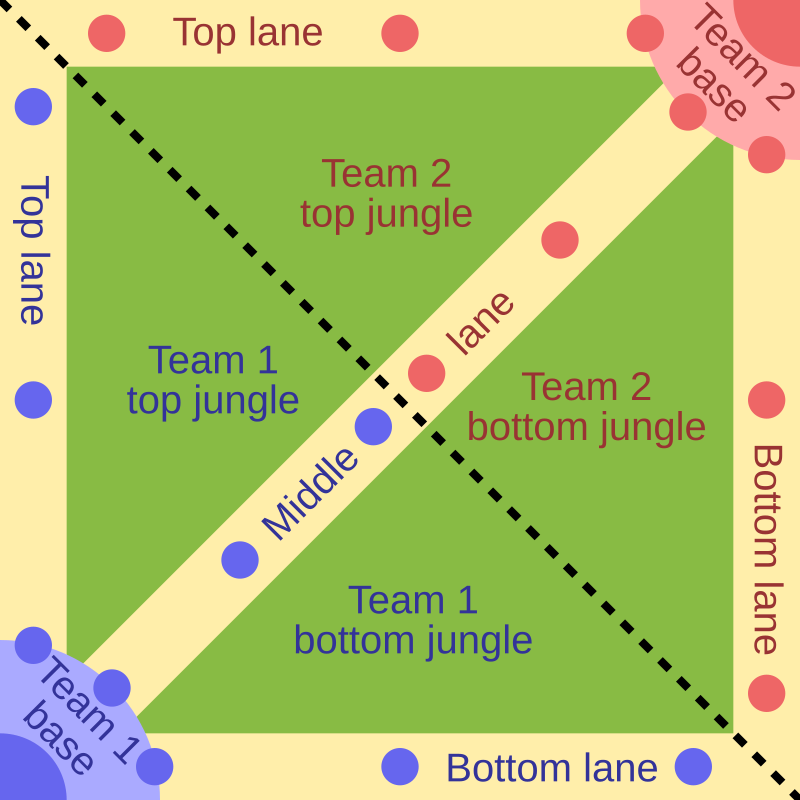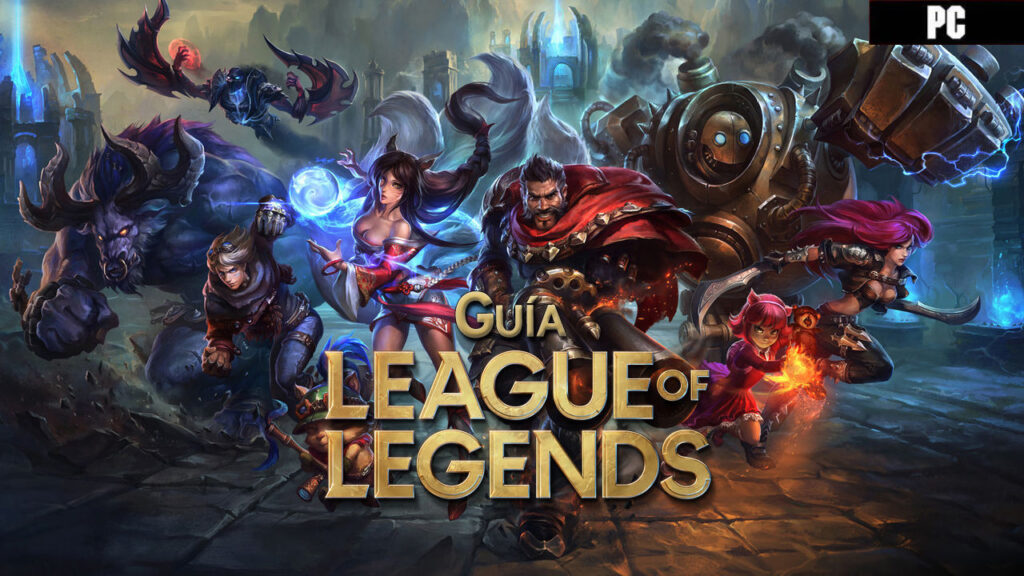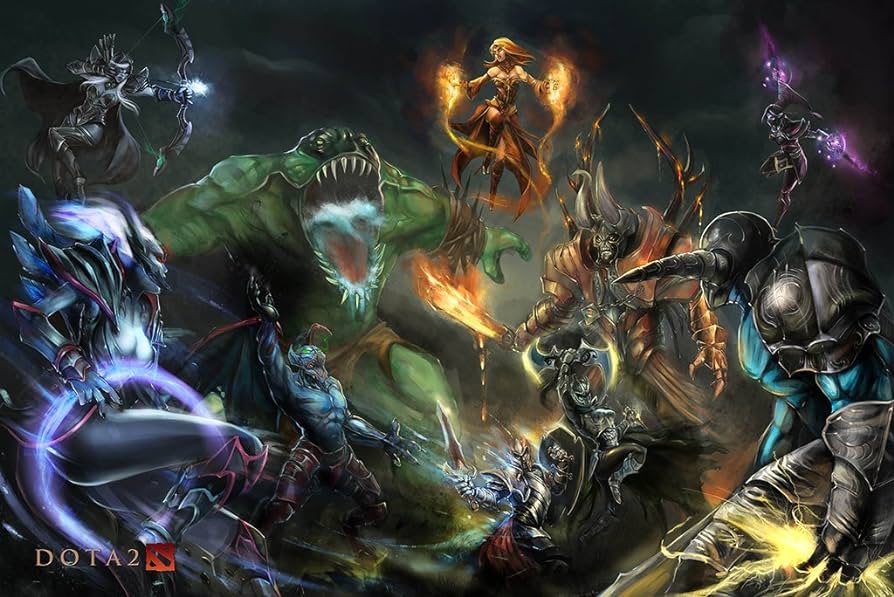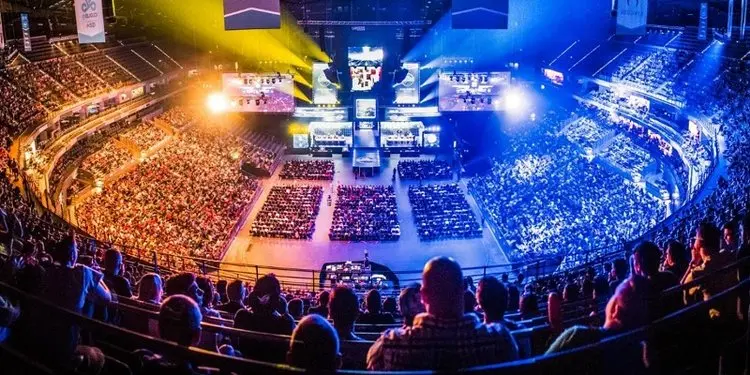Esports has emerged as a global phenomenon, transforming competitive gaming into a professional, highly lucrative industry. Two games that have played pivotal roles in this revolution are ‘League of Legends’ (LoL) and ‘Dota 2’. These titles have not only defined the Multiplayer Online Battle Arena (MOBA) genre but also set new standards for esports, attracting millions of players and viewers worldwide. This article delves into the growth of competitive gaming through the lens of ‘League of Legends’ and ‘Dota 2’, exploring their impact, evolution, and the future of esports.
The Rise of MOBA Games
What are MOBA Games? MOBAs are a subgenre of strategy games where two teams of players compete to destroy the opposing team’s base. Each player controls a unique character, known as a hero or champion, with distinct abilities. Teamwork, strategy, and individual skill are crucial to success in these games.

Read also about: Virtual Reality Gaming: The Success of ‘Beat Saber’ and Beyond.
‘League of Legends’: The Esports Juggernaut
Development and Release: ‘League of Legends’, developed by Riot Games, was released in 2009. It quickly gained popularity due to its accessible gameplay, frequent updates, and strong community support. Riot Games’ commitment to balancing the game and introducing new content helped ‘League of Legends’ become a staple in the gaming world.
Competitive Scene: The competitive scene for ‘League of Legends’ took off with the establishment of the League of Legends Championship Series (LCS) in 2013. Riot Games invested heavily in professional esports, organizing tournaments and building infrastructure to support teams and players. The annual World Championship, known as Worlds, has become one of the most prestigious events in esports, offering multimillion-dollar prize pools and attracting millions of viewers.
Impact and Influence: ‘League of Legends’ has significantly influenced the esports landscape. Its success demonstrated the potential for video games to become mainstream spectator sports. The game’s ecosystem supports professional players, coaches, analysts, and even team owners, creating numerous career opportunities. Riot Games’ emphasis on storytelling and narrative within the esports scene has also enhanced viewer engagement, making matches more compelling and entertaining.

‘Dota 2’: The Pinnacle of Competitive Play
Development and Release: ‘Dota 2’, developed by Valve Corporation, was released in 2013 as the successor to the popular ‘Defense of the Ancients’ (DotA) mod for ‘Warcraft III’. Building on the foundation of its predecessor, ‘Dota 2’ offered a deep and complex gameplay experience that appealed to hardcore gamers.
The International: Valve’s annual tournament, The International (TI), has become synonymous with ‘Dota 2’. Known for its massive prize pools funded by the community through the purchase of in-game items, TI has set records for the largest prize pools in esports history. The prestige and high stakes of The International have made it the pinnacle of competitive gaming, attracting the best players from around the world.
Community and Ecosystem: ‘Dota 2’ has a dedicated and passionate community that contributes to its ongoing success. Valve’s hands-off approach allows for community-driven content, including custom games, mods, and cosmetic items. This community involvement fosters a sense of ownership and engagement, ensuring the game remains vibrant and dynamic.
The Impact of ‘League of Legends’ and ‘Dota 2’ on Esports
Professionalism and Infrastructure: Both ‘League of Legends’ and ‘Dota 2’ have contributed to the professionalization of esports. Structured leagues, franchising, and rigorous training regimens for players have elevated competitive gaming to new heights. Organizations invest in player development, health, and well-being, recognizing the importance of sustainable careers in esports.
Viewer Engagement and Spectatorship: The success of these games has driven innovations in how esports are broadcasted and consumed. High-quality production, engaging commentary, and interactive viewing experiences have made esports accessible and enjoyable for a global audience. Platforms like Twitch and YouTube have played crucial roles in this growth, providing live streaming and video content that keeps fans connected to the action.
Cultural Influence: ‘League of Legends’ and ‘Dota 2’ have transcended gaming to influence broader popular culture. They have inspired merchandise, music, animated series, and even documentaries. Esports athletes are celebrated as celebrities, with substantial social media followings and sponsorship deals.

Challenges and Future Prospects
Sustainability and Player Welfare: As esports continues to grow, issues related to sustainability and player welfare become increasingly important. The intense demands of competitive play can lead to burnout and health issues. Organizations and governing bodies must prioritize the long-term well-being of players to ensure the continued success of the industry.
Diversity and Inclusion: Promoting diversity and inclusion within esports remains a challenge. Efforts to support underrepresented groups, including women and minorities, are crucial for fostering a more inclusive and equitable esports community.
Technological Advancements: Technological advancements, such as virtual reality and augmented reality, hold exciting potential for the future of esports. These innovations could enhance the viewing experience and introduce new forms of competitive gaming.
Conclusion
‘League of Legends’ and ‘Dota 2’ have been instrumental in the explosive growth of esports, setting new standards for competitive gaming and viewer engagement. Their impact extends beyond the games themselves, influencing popular culture and driving the professionalization of the industry. As esports continues to evolve, these titles will undoubtedly remain cornerstones of the competitive gaming world, inspiring future generations of players and fans alike.
